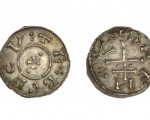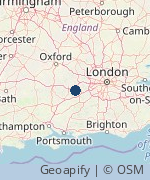English hammered silver coins from Alfred the Great to Charles 1st
David Hughes
- Region:
- South East
- Notice Period:
- Regular (more than one month's notice)
- Type:
- Hobby
- Fee:
- Paid: Travel costs plus £40
- Category:
- History
- Updated:
- 16th May 2022
- Tagged:
- Silver Penny | Hammered Coins | Multiple Royal Mints | Medieval Trade
The early Anglo Saxon tradition was to mimic the earlier Romano/Christian design, and to mint silver common money from about 700 AD. An impression, was hammered into a small round 20 grain piece of silver to make a penny, often with a cross on one side and the head of the ruler into the other, . Anglo Saxon money set a pattern for European trading and the Vikings were the main European traders using this silver coin. Gold was much less comonly used for the more valuable coins. How hammered coins were made will be explained. It is interesting that silver pennies, although they varried slightly between monachs, they closely resembled each other and followed a standard size of 19-21mm diameter and 1.1-1.4gms in weight. From Aethelred II (978-1016) to the early Norman penny coins through to the coins of Henry VII, some 500 years later, the pattern was to put the kings facing head on one side and a short or long cross on the other often with the name on the monier who made it. It was Henry III who changed the penny from a short to a long cross to curb the habit of clipping silver from the edge of the coins. Each monarch had their moneyers make the coins, trusted men and often Bishops. Some kings had as many as 40 different regional moneyers who put their mint mark on the coin. The quality of the struck coins varried by mint and across the various reigns. So bad was it in 1125 that Henry I had 94 moniers castrated and their right hands removed. The silver quality also varied from 100% in sterling to a 50:50 alloy. Coins have been found by metal detecting in recent years but the best souce is when hoards are found burried. The Vikings were paid off with Danegeld which was largely silver pennies and these turn up in large quantities in Scandinavia. The most valuable hammered coins are Harold II, William I, Stephen, Richard 1, Henry V, and Richard III.
Views: 1104 | Enquiries: 4About David Hughes
Graduate Chemist from Southampton University. I joined Guinness Brewing in London in 1972 a brewer for 16 years with a 3 year spell working in Nigeria. General Manager of a large Sunblest bakery In Woodley Reading for 2 years. General Manager for Christian Salvesen managing Marks and Spencer Distribution Centre in Wembley serviceing their top London stores for 10years. 4 years as Sales Director developing new business in contract logistics. Retired in 2005. For 6 years a volunteer Steward at St Georges Chapel, Windsor Castle, meeting and greeting tourists, and recounting the history. Hobbies include auctions and collecting, African butterflies, wine tasting and world travel. I have written 9 books on the advertising/ collectibles and brewing history of Guinness. Married with 2 sons.
Send a message to the speaker
If you are interested in this talk and wish to contact the speaker, please complete the following form:


